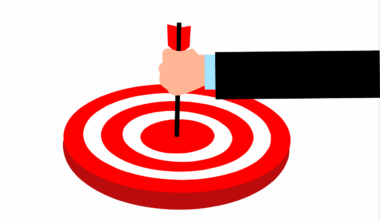How to Analyze Follower Engagement for Better Ad Results
Understanding follower engagement is crucial for measuring the success of any social media advertising campaign. By analyzing these metrics, you can gain insight into what content resonates most with your audience. Start by evaluating key performance indicators (KPIs) related to engagement, such as likes, comments, shares, and click-through rates. These metrics provide a foundational understanding of your audience’s interactions with your ads. Moreover, leverage analytics tools that can give you deeper insights. Most platforms offer analytics dashboards that can track these KPIs effectively. Look for trends over time, and see which ads perform better during specific periods. This analysis can guide you in modifying your strategies based on evolving audience preferences. You can also segment your audience based on demographics to further fine-tune your approach. Remember, the ultimate goal is not just to increase engagement, but to convert these engagements into meaningful actions. Applying what you learn from engagement metrics positively influences your ads, leading to improved sales and brand loyalty. Be sure to document your strategies and learnings for future campaigns.
Collaborating with your marketing team can elevate your ad performance even further. Regular brainstorming sessions during the campaign lifecycle will keep your team aligned with the best practices in social media engagement strategies. Each department can provide valuable insights into audience behaviors, and their knowledge can dynamically shape advertisements for better engagement. Identify and share successful case studies internally, allowing everyone to learn from previous successes and failures. Adapting these strategies will ensure you are not just reacting to trends, but also leading them. Additionally, A/B testing can be beneficial; it enables you to learn which versions of an ad might perform better among your audience segments. After gathering data, analyze the results carefully to make informed decisions moving forward. Focus on changing one variable at a time, be it wording, imagery, or call-to-action, to understand its impact on engagement. As different demographics can react differently to various stimuli, this method can offer clarifying insights. Sharing the findings can foster a culture of experimentation and adaptability among your team, which is invaluable for optimizing marketing efforts.
Utilizing Social Media Tools for Analysis
Many tools are available that specialize in social media analytics, making it easier than ever to understand follower engagement. Platforms such as Hootsuite, Sprout Social, and Buffer provide comprehensive analytics dashboards that simplify data interpretation. These tools offer capabilities like tracking engagement rates, audience growth, and impressions across various campaigns. Furthermore, they allow for comparative analyses, letting you see which ads performed best in relation to others. Consider integrating Google Analytics into your workflow, as it can provide additional metrics like user behavior on your website after clicking an ad. This can give context to your social media efforts and highlight areas for improvement. Be open to adopting new technologies that emerge in the field, constantly evolving and enhancing your analytics capabilities. Remember, the world of social media is fast-paced; what works today might not be effective tomorrow. Regularly re-evaluating your tools and methods ensures you stay competitive. Lastly, set benchmarks to measure your progress against industry standards, helping you understand where you stand in your niche. Awareness is key to staying ahead.
Engagement focused on quality over quantity often yields better results. When evaluating follower interactions, analyze the sentiment behind engagements as well. Parsing through comments can reveal audience feelings and perceptions about your ads. This qualitative analysis will guide you in shaping your future content. Look out for patterns in the positive and negative feedback regarding different ad formats. Are your video ads resonating more than static images? Understanding these nuances lets you tailor your content more effectively. Engaging in conversations can bolster your brand image and foster a loyal community, so respond actively to follower comments. It’s essential to develop a brand voice that resonates well with your audience, helping to create a genuine connection. Regularly revisiting your follower demographics and ensuring your ads align with their needs can lead to sustained growth. Consider implementing polls and surveys to directly gather insights from your followers. Encouraging audience feedback opens communication lines and shows your commitment to audience preferences. Use these insights actively to guide your upcoming campaigns, maintaining relevance and enhancing overall engagement effectiveness.
Identifying Target Audiences for Enhanced Relevance
Accurately identifying your target audiences can dramatically boost the performance of your ad campaigns. Use the analytics gathered about past audiences to refine your target groups for future campaigns. Segment your followers based on various criteria such as interests, behaviors, and demographics. These segments can receive customized ad content that resonates more deeply with them. Ensure that your ads speak directly to the needs and desires of each segment, emphasizing benefits that matter to them. Ad targeting tools on platforms like Facebook and Instagram allow for precision in reaching individuals who fit your chosen criteria. Create specific messages and offers tailored for each segment to increase engagement rates. Utilizing retargeting strategies can also be pivotal; this allows you to reconnect with users who may have shown interest but did not convert immediately. By revisiting these audiences with targeted ads, you can enhance the likelihood of conversion. Consistently measuring engagement from different segments will help you shift your focus to the most lucrative demographics over time, ensuring you invest resources effectively.
Another critical component to improving ad performance is understanding the timing of your ads. Different audiences engage at varying times, so it’s essential to post during peak engagement hours. Utilize data gathered from previous posts to identify when your audience is most active on social media. Adjusting your ad schedules accordingly can yield higher engagement rates. Some analytics tools even allow you to see when followers are online most often. Furthermore, test different posting frequencies to determine how often your audience prefers to see your content without feeling overwhelmed. By finding the right balance, you can keep your audience engaged while minimizing ad fatigue. Continually experiment with different types of content to see what garners the best responses. This could include polls, stories, or influencer partnerships, which may reach broader audiences. As you cultivate this understanding, remember to document what works and what doesn’t, providing a valuable reference for future strategies. Regularly revisiting and revising your tactics in response to engagement insights can foster long-term growth for both follower interaction and ad success.
Monitoring and Refining Your Strategy
Regularly monitoring your social media analytics is pivotal for ongoing success in ad performance. Schedule periodic reviews of your metrics to assess the effectiveness of previous ads and campaigns. This analysis should include deep dives into engagement statistics along with conversion data to understand the complete picture. Identify which campaigns generated the most positive interactions and which fell flat. Not all successes will come from previously successful methods; sometimes, fresh approaches surprising to your audience at first may lead to increased engagement. Therefore, continuously enhance your ad strategy by implementing what you learn from analytics. Create actionable insights that can be translated into future campaigns. Establish a routine for gathering feedback from your audience to keep a finger on the pulse of their preferences. Engaging directly with followers allows for richer insights than analytics alone can provide. Set clear goals for improvement in your engagement metrics and outline plans to achieve them. Ultimately, refining your strategy based on analytics will empower your advertising efforts, leading to measurable increases in follower engagement and better ad results.
To sum up, analyzing follower engagement for ad performance is a dynamic yet rewarding process. By leveraging analytics tools, understanding audience sentiment, and refining strategies over time, you will stand to gain significant insights. Remember that social media landscapes are constantly changing; thus, adaptability is key. Role-play various scenarios in your ad campaigns to explore numerous possibilities. Utilize creative brainstorming sessions within your team to spark innovative ideas for ads that resonate with your followers. Analyze the performance data meticulously and invest time in making your ads as relevant and engaging as possible. Know that consistency in these efforts is vital. Ongoing measurement and constant adaptation based on data will not only help you understand your audience better but also foster a deeper connection with them. Ultimately, the battle for followers’ engagement is one of continuous learning and improvement. Always be prepared to pivot your approach based on new insights obtained from analytics. With dedication and a keen eye for trends, your ad performance can significantly improve through sustained follower engagement.


